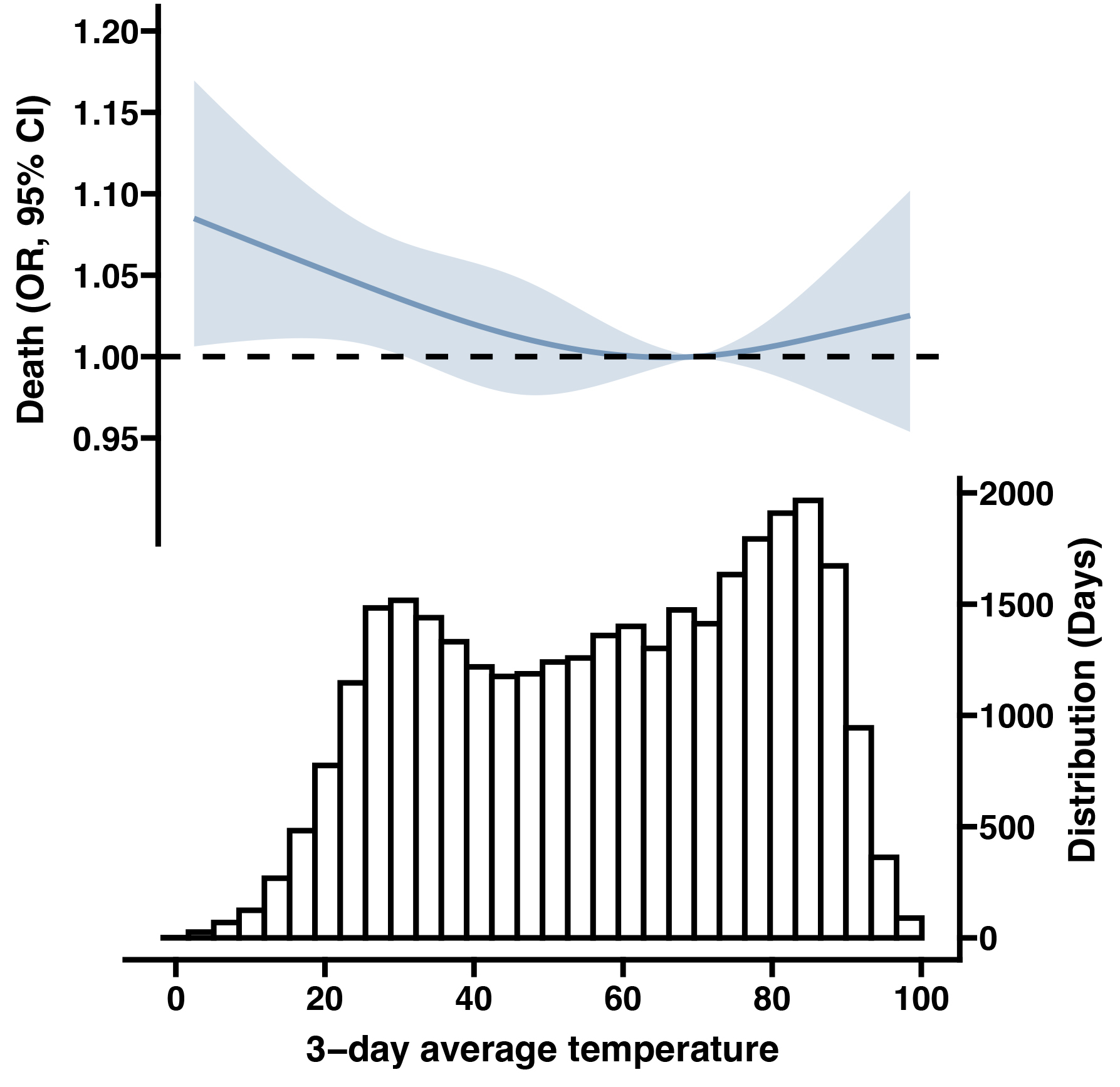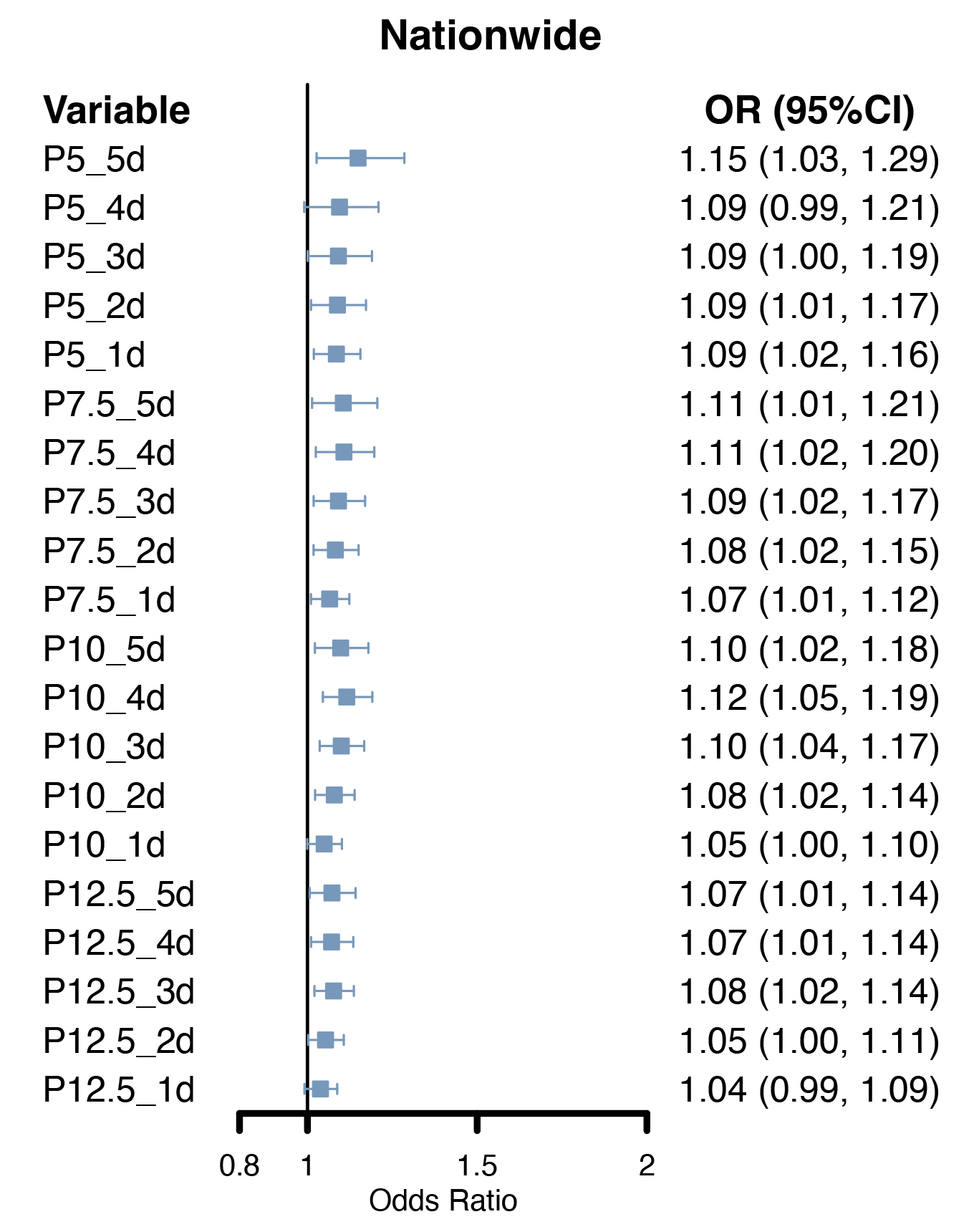Final ID: Su2001
Extreme ambient temperatures increase the risk of congenital heart disease mortality: insights from the national mortality surveillance system of China
Abstract Body (Do not enter title and authors here): Background
Climate change is intricately linked to human health, and the cardiovascular system is particularly susceptible to suboptimal temperatures, causing premature mortality. Extensive research has confirmed a robust link between non-optimal temperatures and most cardiovascular diseases; however, limited focus has been given to investigating the association between non-optimal temperatures and mortality related to congenital heart disease (CHD), one of the most prevalent cardiovascular diseases among children.
Research question
Do extreme temperatures increase the risk of CHD mortality?
Aims
We aimed to investigate the association between CHD mortality and ambient temperatures.
Methods
Based on the national mortality surveillance system of China, we applied a two stage, individual level, time-stratified case-crossover design to investigate the association between CHD mortality and ambient temperatures from 2013 to 2021, with different thresholds of events. After estimation within each province of China, we pooled all the estimations using meta-analytic method. Sensitivity analyses and subgroup analyses were used to explore the stability and vulnerable population.
Results
From 2013 to 2021, a total of 32168 CHD deaths were recorded. Neonates and adults constituted the primary age groups among all CHD-related deaths, with a majority of patients being male (55.2%). Cold temperatures exhibited a significant association with the risk of CHD mortality, while no significant association was observed with heat temperatures (Figure 1). Cold extremes made a significant contribution to CHD mortality in most defined events, with the highest contribution observed in P5_5d (indicating temperatures below the 5th percentile lasting for 5 days; odd ratio [OR]: 1.15, 95% CI: 1.03 to 1.29) (Figure 2). In comparison to male patients, female patients appeared to be more vulnerable to cold extremes, with ORs ranging from 1.08 (95% CI: 1.01 to 1.16) for P10_1d to 1.20 (95% CI: 1.01 to 1.43) for P5_5d.
Conclusion
Extreme cold temperatures significantly increase the risk of CHD mortality. This is the first study performed to explore the relationship between ambient temperatures and CHD mortality, and it may suggest policy-adjustment in healthcare of CHD population.
Climate change is intricately linked to human health, and the cardiovascular system is particularly susceptible to suboptimal temperatures, causing premature mortality. Extensive research has confirmed a robust link between non-optimal temperatures and most cardiovascular diseases; however, limited focus has been given to investigating the association between non-optimal temperatures and mortality related to congenital heart disease (CHD), one of the most prevalent cardiovascular diseases among children.
Research question
Do extreme temperatures increase the risk of CHD mortality?
Aims
We aimed to investigate the association between CHD mortality and ambient temperatures.
Methods
Based on the national mortality surveillance system of China, we applied a two stage, individual level, time-stratified case-crossover design to investigate the association between CHD mortality and ambient temperatures from 2013 to 2021, with different thresholds of events. After estimation within each province of China, we pooled all the estimations using meta-analytic method. Sensitivity analyses and subgroup analyses were used to explore the stability and vulnerable population.
Results
From 2013 to 2021, a total of 32168 CHD deaths were recorded. Neonates and adults constituted the primary age groups among all CHD-related deaths, with a majority of patients being male (55.2%). Cold temperatures exhibited a significant association with the risk of CHD mortality, while no significant association was observed with heat temperatures (Figure 1). Cold extremes made a significant contribution to CHD mortality in most defined events, with the highest contribution observed in P5_5d (indicating temperatures below the 5th percentile lasting for 5 days; odd ratio [OR]: 1.15, 95% CI: 1.03 to 1.29) (Figure 2). In comparison to male patients, female patients appeared to be more vulnerable to cold extremes, with ORs ranging from 1.08 (95% CI: 1.01 to 1.16) for P10_1d to 1.20 (95% CI: 1.01 to 1.43) for P5_5d.
Conclusion
Extreme cold temperatures significantly increase the risk of CHD mortality. This is the first study performed to explore the relationship between ambient temperatures and CHD mortality, and it may suggest policy-adjustment in healthcare of CHD population.
More abstracts on this topic:
Ambient PM2.5 Exposure and Atrial Fibrillation Burden in the United States, 2000–2021: An Ecological State-Level Analysis
Haroun Yazan, Haroun Nisreen, Haroun Dina, Srouji Saif, Bakhsh M. Umair
A Novel Cardiac Simulator "ped UT-Heart" to Support Decision-Making in Surgical Procedures for Complex Congenital Heart DiseaseShiraishi Isao, Kurosaki Kenichi, Iwai Shigemitsu, Washio Takumi, Sugiura Seiryo, Hisada Toshiaki


